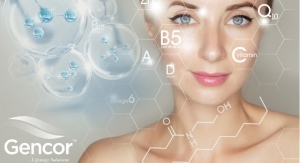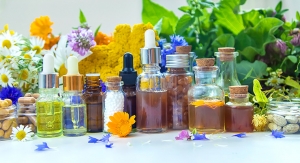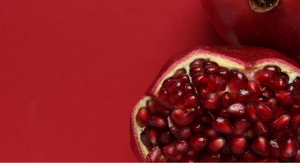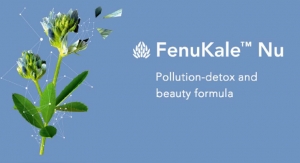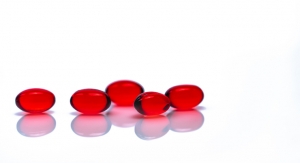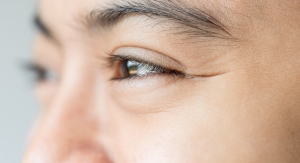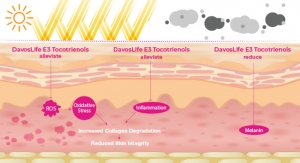09.01.14
Vitamin D Could Help Patients With Chronic Hives
Patients with urticaria (chronic hives) who took 4,000 IU of vitamin D3 per day for 12 weeks showed a 40% decrease in Urticaria Symptom Severity (USS) scores, according to research published in the Annals of Allergy, Asthma & Immunology in April.
In this prospective, double-blind, single-center study, 42 subjects with chronic urticaria were randomized to high (4,000 IU/d) or low (600 IU/d) vitamin D3 supplementation for 12 weeks. All subjects were provided with a standardized triple-drug therapy (cetirizine, ranitidine and montelukast) and a written action plan. Data on USS scores, medication use, blood for 25-hydroxyvitamin D and safety measurements were collected.
Results showed triple-drug therapy decreased total USS scores by 33% in the first week. There was a further significant decrease (40%) in total USS scores in the high, but not low, vitamin D3 treatment group by week 12. Compared with low treatment, the high treatment group demonstrated a trend (P = .052) toward lower total USS scores at week 12, which was driven by significant decreases in body distribution and number of days with hives. Beneficial trends for sleep quality and pruritus scores were observed with high vitamin D3. Serum 25-hydroxyvitamin D levels increased with high vitamin D3 supplementation, but there was no correlation between 25-hydroxyvitamin D levels and USS scores. There was no difference in allergy medication use between groups and no adverse events occurred.
Researchers concluded add-on therapy with high-dose vitamin D3 (4,000 IU/d) could be considered a safe and potentially beneficial immunomodulator in patients with chronic urticaria.
Probiotic May Support Skin Sensitivity
Oral supplementation with a probiotic may offer positive benefits for skin sensitivity and skin barrier function recovery, according to research published in Beneficial Microbes in June.
In recent decades, the prevalence of subjects with reactive skin has increased considerably in industrialized countries. Half (50%) of women and 30% of men report cutaneous discomfort classified under reactive/sensitive skin. Several topical approaches have been proposed, in particular through improvement of galenic forms or protection of epidermal surface.
In this study, researchers proposed to act differently—deeply from inside the body via an innovative nutritional approach. To this purpose, Lactobacillus paracasei NCC 2461 (ST11) was selected because of its specific beneficial skin properties discovered via in vitro studies; i.e., diminution of neurogenic inflammation and promotion of the recovery of skin barrier function. They designed a randomized, double-blind, placebo-controlled clinical study with a two-month supplementation in two female treatment groups (n=32 per group). A capsaicin test was performed to monitor the time course of skin sensitivity. Moreover, transepidermal water loss was assessed to analyze the rate of skin barrier function recovery; dryness of the leg and roughness of the cheeks was investigated by a dermatologist as well as by self-assessment.
The results of the clinical trial showed that oral supplementation with the probiotic decreased skin sensitivity and increased the rate of barrier function recovery. Thus, the data provide evidence that daily intake of ST11 could improve reactive skin condition.
Antioxidants Found To Protect Skin During Cancer Radiotherapy
Radiotherapy for cancer involves exposing the patient or their tumor more directly to ionizing radiation, such as gamma rays or X-rays. The radiation damages the cancer cells irreparably. Unfortunately, such radiation is also harmful to healthy tissue, particularly the skin over the site of the tumor, which is then at risk of hair loss, dermatological problems and even skin cancer.
Writing in the International Journal of Low Radiation, study authors explained how three ubiquitous and well-studied natural products derived from plants can protect the skin against gamma radiation during radiotherapy.
The authors discussed the benefits of the organic, antioxidant compounds caffeic acid (CA), rosmarinic acid (RA) and trans-cinnamic acid (TCA) used at non-toxic concentrations. They tested the radio-protective effect of these compounds against gamma-radiation in terms of reducing levels of reactive oxygen species generated in skin cells by clinical relevance dose of gamma ray in the laboratory and in terms of the damage to the genetic material DNA, specifically double strand breaks in laboratory samples of human skin cells (keratinocytes). They found that treating the human skin cells with CA, RA and TCA can protect the cells by 40, 20 and 15%, respectively, from gamma ray toxicity. They suggest the protective effect arises because the compounds mop up the reactive oxygen species and chemically deactivate them as well as enhance the body’s natural DNA repair mechanisms.
The team suggested these compounds might best be used as skin protectants during combination chemo- and radio-therapy. Further work is underway to investigate the clinical potential of mixtures of the three natural products.
Boswellia Cream May Help Treat Psoriasis
A study on Sabinsa’s (East Windsor, NJ) Boswellia cream for treatment of psoriasis, “Clinical Evaluation of AKBBA in the management of psoriasis,” was published recently in Clinical Dermatology 2014; 2 (1): 17-24. U.S. clinical trials, intended to support AKBBA’s eventual approval as a drug by FDA for treatment of psoriasis, will begin in the near future, according to the company.
The cream of Boswellia serrata Roxb extract standardized for 5% of 95% 3-O-Acetyl-11-Keto Beta Boswellic Acid (AKBBA) was studied in an open label, multi-centered phase III clinical trial, evaluating 200 psoriatic patients with application of AKBBA cream three times daily for a period of 12 weeks. The researchers observed significant changes in LTB4 (p<0.001) and TNF alpha (p<0.01) values from the baseline along with significant changes (p<0.05) in VEGF and PGE2. Reduction in “modified” PASI score from the baseline visit was in consensus with the global evaluations by physician and patients.
The evidence showed superior anti-inflammatory response rates, demonstrating this non-toxic treatment is beneficial for those suffering from the condition.
“Our understanding of this ingredient, originating from one of the earliest compounds released by Sabinsa, called Boswellin, is growing, and we want the world to know the positive research and the impact it has on human health,” said Dr. Muhammed Majeed, Sabinsa founder. “Such indications prevalent in Ayurvedic texts are now being proven by modern research, in terms of correctly standardizing, isolating the unique compound(s) and ultimately formulating safe and effective products.”
The cream product is sold and marketed as a drug in India. Sabinsa holds several patents for this and other uses of Boswellia.
Study Shows Dermaval Inhibits HNE Enzyme
A double-blind, cross-over, placebo-controlled clinical study published in Nutrition and Dietary Supplements this year demonstrated that consumption of 50 mg of Dermaval, a proprietary, patent-pending, all-natural combination of fruit and vegetable concentrates from FutureCeuticals (Momence, IL), resulted in statistically significant inhibition of Human Neutrophil Elastase (HNE) activity among 20 healthy subjects during a two-hour period following ingestion. HNE is an enzyme that contributes to the degradation of elastin, a key structural protein responsible for the elasticity of the skin and other connective tissue. HNE can be active in healthy persons in response to certain routine activities, such as eating.
The study was performed on healthy human subjects who had fasted overnight (12-16 hours). On day 1, blood was drawn at Time 0 from all study subjects prior to ingesting 200 ml of water. Blood was subsequently drawn at 60 and 120 minutes following ingestion of water. On day 2, after a blood draw at Time 0, participants received 75 g of glucose in water and were tested according to the same protocol. On day 3, after a blood draw at Time 0, participants consumed a 50 mg serving of Dermaval 15 minutes prior to ingestion of the 75 g of glucose in water, and again tested at 60 and 120 minutes.
HNE values for day 1 (water only) did not change. On day 2 (glucose in water), HNE levels increased by 75% over baseline. This spike in HNE activity was completely absent on day 3, when subjects were given Dermaval prior to the 75 g of glucose in water.
“There have been a few instances where natural materials have been shown to demonstrate HNE inhibitory activity in vitro,” said Dr. Zbigniew Pietrzkowski, vice president of research and development at FutureCeuticals. “But there has been little evidence of in vivo activity in humans. This study is remarkable in that it suggests a potential direct effect of a small but concentrated amount of all-natural food materials on everyday physiological activities associated with aging and skin health.”
Dermaval will be marketed as a clinically backed ingredient in healthy aging and beauty-from-within categories.
Thorne Research Launches NiaCel to Support Healthy Aging
Thorne Research, Sandpoint, ID, has launched NiaCel, a nutritional supplement designed to support endurance, energy and healthy aging. NiaCel is one of the first commercially available products to feature the ingredient Niagen from Irvine, CA-based natural products company ChromaDex Corp.
ChromaDex developed its patent-protected ingredient Niagen as a commercially available brand of nicotinamide riboside (NR). NR, the active ingredient in NiaCel, boosts levels of Nicotinamide adenine dinucleotide (NAD+) in cells and tissue. Studies have demonstrated that increasing levels of NAD+ can support healthy aging by stimulating mitochondrial energy production, as well as by activating sirtuin function.
Vemma Renew Targets Beauty from Within
Vemma Nutrition Company, Tempe, AZ, has launched Vemma Renew, a ready-to-drink functional beverage positioned to support beauty from within.
The product contains 45 calories and 5 grams of all-natural sweeteners per 8.3-oz. single-serving can. With a light fruit flavor, Vemma Renew contains 2 oz. of the same clinically studied Vemma formula found in the Verve healthy energy drink line of products, plus 20 mg of plant-sourced silica, which is known to help maintain healthy skin, nails and hair.
Physician-formulated Vemma Renew 14 grams of carbohydrates (45 calories) per can, no artificial flavors, colors, caffeine or high fructose corn syrup, and is non-carbonated and non-GMO. In addition, each can features 12 full-spectrum vitamins, essential plant-sourced minerals, organic glyconutrient-rich aloe vera, whole fruit mangosteen and decaffeinated organic green tea extract.
Patients with urticaria (chronic hives) who took 4,000 IU of vitamin D3 per day for 12 weeks showed a 40% decrease in Urticaria Symptom Severity (USS) scores, according to research published in the Annals of Allergy, Asthma & Immunology in April.
In this prospective, double-blind, single-center study, 42 subjects with chronic urticaria were randomized to high (4,000 IU/d) or low (600 IU/d) vitamin D3 supplementation for 12 weeks. All subjects were provided with a standardized triple-drug therapy (cetirizine, ranitidine and montelukast) and a written action plan. Data on USS scores, medication use, blood for 25-hydroxyvitamin D and safety measurements were collected.
Results showed triple-drug therapy decreased total USS scores by 33% in the first week. There was a further significant decrease (40%) in total USS scores in the high, but not low, vitamin D3 treatment group by week 12. Compared with low treatment, the high treatment group demonstrated a trend (P = .052) toward lower total USS scores at week 12, which was driven by significant decreases in body distribution and number of days with hives. Beneficial trends for sleep quality and pruritus scores were observed with high vitamin D3. Serum 25-hydroxyvitamin D levels increased with high vitamin D3 supplementation, but there was no correlation between 25-hydroxyvitamin D levels and USS scores. There was no difference in allergy medication use between groups and no adverse events occurred.
Researchers concluded add-on therapy with high-dose vitamin D3 (4,000 IU/d) could be considered a safe and potentially beneficial immunomodulator in patients with chronic urticaria.
Probiotic May Support Skin Sensitivity
Oral supplementation with a probiotic may offer positive benefits for skin sensitivity and skin barrier function recovery, according to research published in Beneficial Microbes in June.
In recent decades, the prevalence of subjects with reactive skin has increased considerably in industrialized countries. Half (50%) of women and 30% of men report cutaneous discomfort classified under reactive/sensitive skin. Several topical approaches have been proposed, in particular through improvement of galenic forms or protection of epidermal surface.
In this study, researchers proposed to act differently—deeply from inside the body via an innovative nutritional approach. To this purpose, Lactobacillus paracasei NCC 2461 (ST11) was selected because of its specific beneficial skin properties discovered via in vitro studies; i.e., diminution of neurogenic inflammation and promotion of the recovery of skin barrier function. They designed a randomized, double-blind, placebo-controlled clinical study with a two-month supplementation in two female treatment groups (n=32 per group). A capsaicin test was performed to monitor the time course of skin sensitivity. Moreover, transepidermal water loss was assessed to analyze the rate of skin barrier function recovery; dryness of the leg and roughness of the cheeks was investigated by a dermatologist as well as by self-assessment.
The results of the clinical trial showed that oral supplementation with the probiotic decreased skin sensitivity and increased the rate of barrier function recovery. Thus, the data provide evidence that daily intake of ST11 could improve reactive skin condition.
Antioxidants Found To Protect Skin During Cancer Radiotherapy
Radiotherapy for cancer involves exposing the patient or their tumor more directly to ionizing radiation, such as gamma rays or X-rays. The radiation damages the cancer cells irreparably. Unfortunately, such radiation is also harmful to healthy tissue, particularly the skin over the site of the tumor, which is then at risk of hair loss, dermatological problems and even skin cancer.
Writing in the International Journal of Low Radiation, study authors explained how three ubiquitous and well-studied natural products derived from plants can protect the skin against gamma radiation during radiotherapy.
The authors discussed the benefits of the organic, antioxidant compounds caffeic acid (CA), rosmarinic acid (RA) and trans-cinnamic acid (TCA) used at non-toxic concentrations. They tested the radio-protective effect of these compounds against gamma-radiation in terms of reducing levels of reactive oxygen species generated in skin cells by clinical relevance dose of gamma ray in the laboratory and in terms of the damage to the genetic material DNA, specifically double strand breaks in laboratory samples of human skin cells (keratinocytes). They found that treating the human skin cells with CA, RA and TCA can protect the cells by 40, 20 and 15%, respectively, from gamma ray toxicity. They suggest the protective effect arises because the compounds mop up the reactive oxygen species and chemically deactivate them as well as enhance the body’s natural DNA repair mechanisms.
The team suggested these compounds might best be used as skin protectants during combination chemo- and radio-therapy. Further work is underway to investigate the clinical potential of mixtures of the three natural products.
Boswellia Cream May Help Treat Psoriasis
A study on Sabinsa’s (East Windsor, NJ) Boswellia cream for treatment of psoriasis, “Clinical Evaluation of AKBBA in the management of psoriasis,” was published recently in Clinical Dermatology 2014; 2 (1): 17-24. U.S. clinical trials, intended to support AKBBA’s eventual approval as a drug by FDA for treatment of psoriasis, will begin in the near future, according to the company.
The cream of Boswellia serrata Roxb extract standardized for 5% of 95% 3-O-Acetyl-11-Keto Beta Boswellic Acid (AKBBA) was studied in an open label, multi-centered phase III clinical trial, evaluating 200 psoriatic patients with application of AKBBA cream three times daily for a period of 12 weeks. The researchers observed significant changes in LTB4 (p<0.001) and TNF alpha (p<0.01) values from the baseline along with significant changes (p<0.05) in VEGF and PGE2. Reduction in “modified” PASI score from the baseline visit was in consensus with the global evaluations by physician and patients.
The evidence showed superior anti-inflammatory response rates, demonstrating this non-toxic treatment is beneficial for those suffering from the condition.
“Our understanding of this ingredient, originating from one of the earliest compounds released by Sabinsa, called Boswellin, is growing, and we want the world to know the positive research and the impact it has on human health,” said Dr. Muhammed Majeed, Sabinsa founder. “Such indications prevalent in Ayurvedic texts are now being proven by modern research, in terms of correctly standardizing, isolating the unique compound(s) and ultimately formulating safe and effective products.”
The cream product is sold and marketed as a drug in India. Sabinsa holds several patents for this and other uses of Boswellia.
Study Shows Dermaval Inhibits HNE Enzyme
A double-blind, cross-over, placebo-controlled clinical study published in Nutrition and Dietary Supplements this year demonstrated that consumption of 50 mg of Dermaval, a proprietary, patent-pending, all-natural combination of fruit and vegetable concentrates from FutureCeuticals (Momence, IL), resulted in statistically significant inhibition of Human Neutrophil Elastase (HNE) activity among 20 healthy subjects during a two-hour period following ingestion. HNE is an enzyme that contributes to the degradation of elastin, a key structural protein responsible for the elasticity of the skin and other connective tissue. HNE can be active in healthy persons in response to certain routine activities, such as eating.
The study was performed on healthy human subjects who had fasted overnight (12-16 hours). On day 1, blood was drawn at Time 0 from all study subjects prior to ingesting 200 ml of water. Blood was subsequently drawn at 60 and 120 minutes following ingestion of water. On day 2, after a blood draw at Time 0, participants received 75 g of glucose in water and were tested according to the same protocol. On day 3, after a blood draw at Time 0, participants consumed a 50 mg serving of Dermaval 15 minutes prior to ingestion of the 75 g of glucose in water, and again tested at 60 and 120 minutes.
HNE values for day 1 (water only) did not change. On day 2 (glucose in water), HNE levels increased by 75% over baseline. This spike in HNE activity was completely absent on day 3, when subjects were given Dermaval prior to the 75 g of glucose in water.
“There have been a few instances where natural materials have been shown to demonstrate HNE inhibitory activity in vitro,” said Dr. Zbigniew Pietrzkowski, vice president of research and development at FutureCeuticals. “But there has been little evidence of in vivo activity in humans. This study is remarkable in that it suggests a potential direct effect of a small but concentrated amount of all-natural food materials on everyday physiological activities associated with aging and skin health.”
Dermaval will be marketed as a clinically backed ingredient in healthy aging and beauty-from-within categories.
Thorne Research Launches NiaCel to Support Healthy Aging
Thorne Research, Sandpoint, ID, has launched NiaCel, a nutritional supplement designed to support endurance, energy and healthy aging. NiaCel is one of the first commercially available products to feature the ingredient Niagen from Irvine, CA-based natural products company ChromaDex Corp.
ChromaDex developed its patent-protected ingredient Niagen as a commercially available brand of nicotinamide riboside (NR). NR, the active ingredient in NiaCel, boosts levels of Nicotinamide adenine dinucleotide (NAD+) in cells and tissue. Studies have demonstrated that increasing levels of NAD+ can support healthy aging by stimulating mitochondrial energy production, as well as by activating sirtuin function.
Vemma Renew Targets Beauty from Within
Vemma Nutrition Company, Tempe, AZ, has launched Vemma Renew, a ready-to-drink functional beverage positioned to support beauty from within.
The product contains 45 calories and 5 grams of all-natural sweeteners per 8.3-oz. single-serving can. With a light fruit flavor, Vemma Renew contains 2 oz. of the same clinically studied Vemma formula found in the Verve healthy energy drink line of products, plus 20 mg of plant-sourced silica, which is known to help maintain healthy skin, nails and hair.
Physician-formulated Vemma Renew 14 grams of carbohydrates (45 calories) per can, no artificial flavors, colors, caffeine or high fructose corn syrup, and is non-carbonated and non-GMO. In addition, each can features 12 full-spectrum vitamins, essential plant-sourced minerals, organic glyconutrient-rich aloe vera, whole fruit mangosteen and decaffeinated organic green tea extract.
|
Galderma to operate as pharmaceutical arm of the company. Focused on delivering science-based solutions for the health of skin, hair and nails, Nestlé has formally established Nestlé Skin Health S.A. a fully-owned subsidiary based in Lausanne, Switzerland. In July, Nestlé completed its acquisition of L’Oréal’s 50% stake in Galderma, a pharmaceutical company specializing in the research, development and marketing of dermatological treatments. With approximately 5,000 employees and a presence in 80 countries, Galderma will operate as the pharmaceutical arm of Nestlé Skin Health S.A. Nestlé also recently completed the acquisition of Valeant Pharmaceuticals International’s commercialization rights to several key injectable aesthetic dermatology products in the U.S. and Canada. These rights will be integrated into Nestlé Skin Health and commercialized by Galderma, according to the company. Nestlé is also merging its infant skin care business, Bübchen, into this newly formed entity. In February, Nestlé and L’Oréal announced a strategic transaction under which L’Oréal will buy 48.5 million of its own shares (8% of its share capital) from Nestlé, financed partially through L’Oréal’s disposal to Nestlé of its stake in Galderma and €3.4 billion. Nestlé’s stake in L’Oréal will be reduced from 29.4% to 23.29% of the share capital and the Bettencourt Meyers family’s stake in L’Oréal will increase from 30.6% to 33.31%. In order to reflect the change of Nestlé’s stake in L’Oréal’s governance, the number of Nestlé representatives on L’Oréal’s Board of Directors will be adjusted from three to two, and the ownership ceiling provisions of the shareholders’ agreement between Nestlé and the Bettencourt Meyers family will apply to their respective new holdings. “Nestlé will continue to support the development of L’Oréal as in the past 40 years,” said Nestlé Chairman Peter Brabeck-Letmathe. “In this context, Nestlé will continue to act in concert with the Bettencourt Meyers family and the existing agreements, adapted to the new situation, will remain in place.” L’Oréal will focus exclusively on its cosmetics business, according to Jean-Paul Agon, chairman and CEO of L’Oréal, “and its ‘Beauty for all’ mission, its universalization strategy and its ambition to win 1 billion new consumers. L’Oréal will indeed benefit from a very significant and reinforced presence from the founding Bettencourt Meyers family, who will continue to fully support the company as it always did in the past.” |
|
Mintel estimated the men’s personal care market at $3.9 billion in 2013, growing 15% since 2008. Men might not like to admit that they have a skin care regimen, but according to a report from Mintel that looked at the male grooming sector, 58% of men aged 18-24 and 63% of those 25-34 reported that they use a facial moisturizing product. This is in stark contrast to the 32% of those aged 55-64 and 29% of men over 65 from other age demographics claiming to have such a regimen. “That younger men are more participative in the facial skin care category bodes well for the future growth of the men’s skin care segment as younger men will likely continue using products as they age,” said Gabriela Elani, home and personal care analyst at Mintel. “The fact that sales of men’s personal care products have risen so sharply over the past five years highlights the growth in product categories that have traditionally been segmented by gender, such as antiperspirant/deodorant (APDO), shaving and shower products.” The men’s personal care market was estimated at $3.9 billion in 2013, growing 15% since 2008. Despite the increased use of facial skin care among young men, toiletry products, such as APDO, shower gel and hair care products enjoy the highest market penetration, as male consumers use these products on a daily basis to maintain their personal hygiene. The men’s APDO segment has increased by 13% during 2008-2013 and is now worth $1.4 billion. Mintel projected this segment will continue to grow steadily year to year into 2018. The continued growth is not surprising as about 95% of men reported they use an APDO product, making it the most commonly used product among all male respondents. “It will be a challenge for companies and brands to expand the current market, as men don’t have a strong interest in trying out new product forms. In order to accelerate category growth, companies should focus on improving the functionality of male-specific hair care and facial skin care products in order to persuade men to switch over from general market products. Improved functionality could also influence non-users to try out products in these categories,” said Ms. Elani. |


